Why Integrate SAP SuccessFactors in the Cloud?
Category: SAP SuccessFactors - EC & PMGM Posted:May 15, 2018 By: Robert SAP Cloud Platform along with its extensions enables its customers to provide out of the box solutions which will, in turn, transform the functionalities of SAP SuccessFactors. Another interesting development is that the core functionality of employee Central EC can be integrated on the SuccessFactors technology level of BizX suite along with the SuccessFactors extension center.
SAP Cloud Platform along with its extensions enables its customers to provide out of the box solutions which will, in turn, transform the functionalities of SAP SuccessFactors. Another interesting development is that the core functionality of employee Central EC can be integrated on the SuccessFactors technology level of BizX suite along with the SuccessFactors extension center.
The main layers and functionalities of the above-mentioned platform extensions are:
- Synchronized experience for the end user across the various modules within SuccessFactors.
- The Capabilities of an Admin to manage the complete lifecycle of every extension write from initiation to experimentation and ending with publishing and authoring.
- Another feature worthy of mention is the development service for extension building which is closely linked and synchronized with SuccessFactors.
As organizations put efforts into innovation and gaining a detailed competitive edge they are also discovering the plus and minus sides of cloud computing for critical business operations. These operations may include even human capital management systems. By doing this, companies can come execute a trade-off which can be implemented to accomplish a balance between cloud innovations and current investments in on-premise results and products.
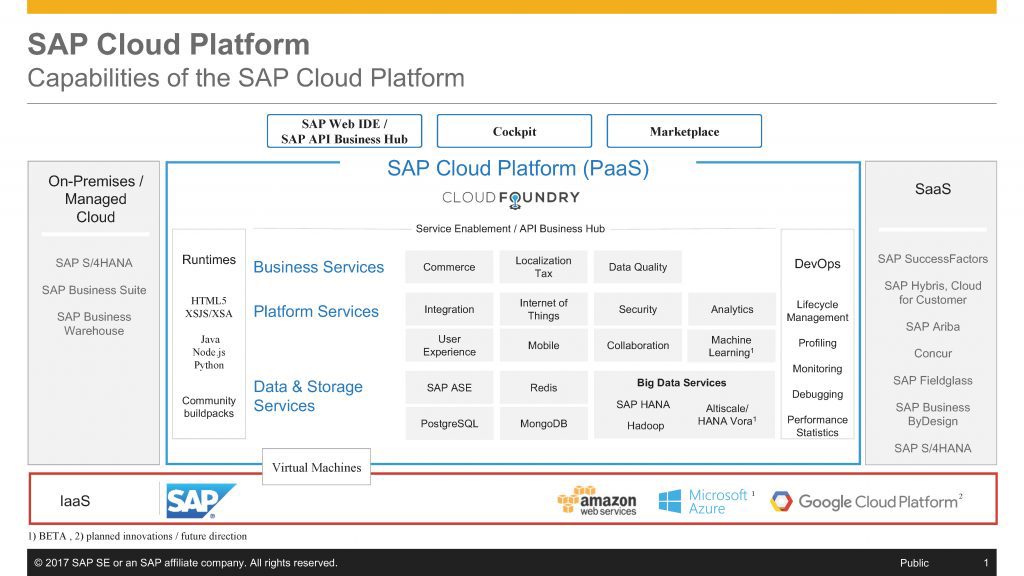
For most organizations, the solution to this is a platform as a service option. In this model, the SAP Cloud Platform and the extension package for SuccessFactors can serve as an example. There are numerous benefits of the platform as a service solution. SAP in turn, delivers the ideal balance between on-premise system control and cloud solution innovations.
The extensions of SAP SuccessFactors are built to harness SAP cloud portal. This is a cloud- based solution which can hand out simple site creation coupled with social consumption. This will also result in a superior User experience and is architected for consumption by mobile technologies. Since this is powered by the SAP Cloud Platform, such a solution will enable dependable and secure integration with the client’s on-premise network for harnessing existing assets which are also based on on-premise.
SAP Cloud Platform for SuccessFactors
In the current market scenario, there is a consistent and growing request for cloud-based functionalities in enterprise applications. In such a situation, SAP Cloud Platform is the perfect platform as a solution (Paas) product which is architected to meet a broad range of growing customer needs. This means that organizations can seamlessly grow their business using the cloud through integration and extension into the cloud itself.
The SAP Cloud Platform is an ideal enterprise platform as a service solution and this is especially true in terms of Holistic application improvement and related competencies.
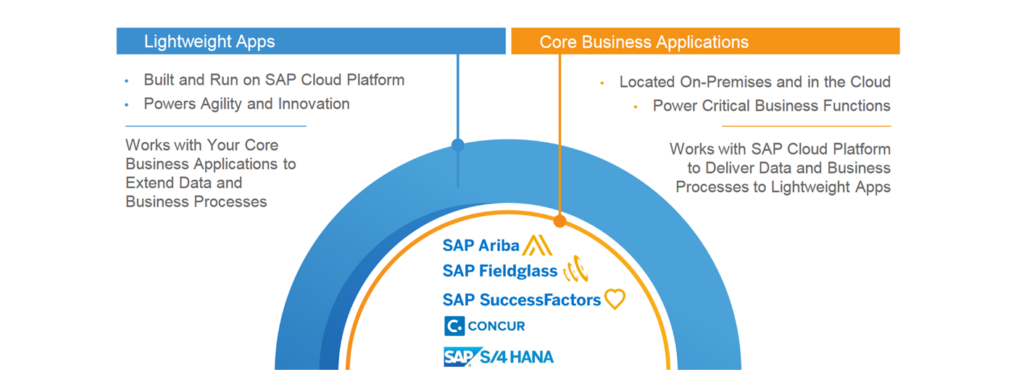
This allows clients to accomplish greater levels of business agility and also form an incorporated and highly efficient enterprise while speeding up the digital transformation through the departments within the organization. All this can be done without the need for maintenance or investment in on-premise infrastructure.
One can rapidly broaden on-premise or cloud applications to distribute enterprise objectives. It is also possible to customize and highly personalize pre-existing applications by choosing from over 8000 applications for businesses built from SAP associates, which can be integrated spontaneously with SAP applications.
One can also mesh complete IT settings built upon internet of things applications or applications related to Big Data. The current legacy applications can also be activated within few weeks or months instead of years.
There are Holistic abilities and facilities within the SAP Cloud Platform.The SAP Cloud Platform can be thought of as an enabler for comprehensive agility innovation and simplification in this age of digital transformation.
Why is SAP Cloud Platform for SuccessFactors interesting?
Most enterprises moving towards the cloud will find SAP SuccessFactors as a foundation with respect to the human resources space. Even though it is highly flexible and can also be arranged to fit organizational needs of every size – any software suite will have its limits. The SAP Cloud Platform is all about constructing whole new applications while building on existing applications to reach the higher functionalities.
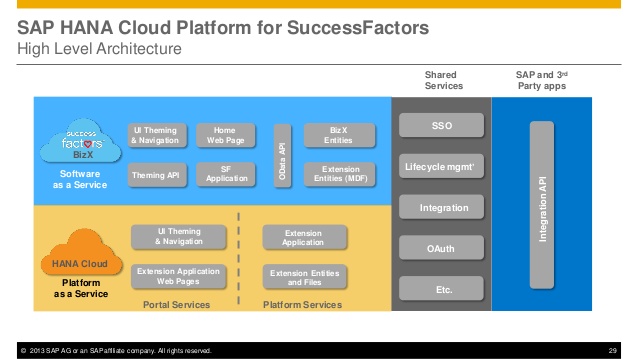
It is also important to note that the SAP Cloud Platform is not restricted to SuccessFactors but can be thought of as a broader SAP inventiveness. But you should also keep in mind that SAP SuccessFactors customers and clients have a bigger reason to utilize the SAP Cloud Platform as compared to other service providers because of widespread coordination and cooperation and the presence of broad SAP capabilities. The SAP Cloud Platform provides large data centers for SAP cloud in nearly at the same location as SuccessFactors.
The SuccessFactors cloud has its possibilities in the delivery of idealized and highly optimized processes that are necessary and however possible. This will allow enterprises to build lightweight applications, which can be customized while still being highly effective -one has to remember to be agile to be effective.
What is SAP Cloud Platform for SuccessFactors?
SAP Cloud Platform has been architected to meet customer needs and help spread the Enterprise in the cloud. It has holistic competencies and facilities which include its in-memory competencies based on SAP HANA and this in turn, offers an amazing amount of flexibility and increased efficiency of an organization to build more efficient cloud applications in much lesser time.
The platform of choice for Enterprises and individuals in the world over has always been the SAP Cloud Platform, when it comes to building next-generation applications for the cloud or cloud solutions in general.
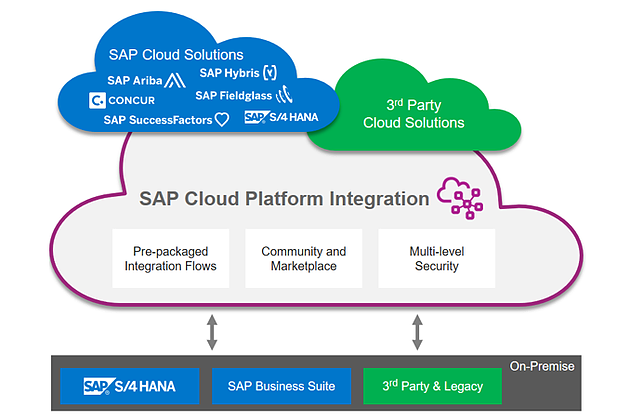
The SAP Cloud Platform presents itself as a platform as a service in the form of a modular as well as a secure and scalable solution. This, of course, involves complete functionalities architected to empower clients and associates alike to build cloud-based business apps at an accelerated pace. This, in turn, will connect to and increase the value of both SAP and non SAP enterprise software. Integration in the cloud presents challenges in terms of security and data integrity being developed by SAP. However, it is guaranteed to be engineered for security that is multi-level, which is also certified and approved to meet and even surpass the existing cloud standards in the industry. This is made possible by leveraging the in-memory, SAP HANA database in real time.
Even though it’s simple to think of the SAP Cloud Platform as just hosting services it is a whole lot more. In contrast to the hosting service, the customers will also receive the value-added facilities and extended benefit from the SAP Cloud Platform.
Example use cases for SuccessFactors
One can build Java as well as HTML5 compatible applications using the SAP Cloud Platform which can be incorporated into the SuccessFactors suite through the Odata API. The SAP Cloud Platform enables customers to not only create the complete portal sites with entire homepage and tiles, but also to design simple applications that actually imitate the user interface of SAP SuccessFactors.
The extension package for SuccessFactors also permits single sign-on from SuccessFactors right onto your custom application while still maintaining authorizations in SuccessFactors through role-based approvals. This, in turn, means that one can use extension objects of SuccessFactors such as company car, employee data, security incidents and display in-screen with the user interface and ad-hoc requirements and business processes as well, using code. – The role-based approvals are also used in SuccessFactors to monitor access. When this is combined with the workflows and business rules, all the required building blocks will be available to the users, to efficiently create the highly useful applications in very less time.
When the use cases are considered in the HR field, there are some possible ideas. They are:
- Enterprise Collaboration: Influence SAP JAM to attach the solutions or embed SAP Jam competences into your applications through the predefined UI widgets or REST/ODATA APIs.
- SuccessFactors solution extension.Need support for business processes in SuccessFactors and MDF objects and business rules are not heavy enough? With SAP Cloud it is possible to create a customized business process in the SAP Cloud Platform as an extension of the SAP SuccessFactors Employee Central, for example, to fulfill the industry and local needs, or mobile and portal access. As an example, this could be considered as a better security incident report, or data searching or maintenance competencies.
Key criteria and questions
The flexibility in the SAP Cloud Platform can be measured by considering how an enterprise can use existing standard functionalities, put set functionalities on hold and tell business requirements which are customized. After this added extension is built through business decisions.
- In order to be sure that your organization needs the SAP Cloud Platform to enhance the operations and increase the bottom line, the following question needs to be asked:
- Does the business need are valid and justified
- Is it required to control the innovation cycle?
- Do we have cloud as a strategy?
- Is mobile use key for us
- Is it required to have a solution with low, no downtime and which are generally non-disruptive to the current solutions?
If the answers to more than 3 questions are yes, then it is definitely required to have a SAP cloud platform to excel in the existing market.
Getting started with SAP Cloud
Most enterprises in the market don’t realize that the SAP Cloud Platform is a product that’s licensed from SAP but is not a part of the SuccessFactors license package.
To get a head start on the SAP Cloud Platform operations, enterprises can use various courses available both on open SAP as well as the SAP learning hub to begin with. This is good from both the perspective i.e. overall business as well as technical.
When it comes to the design of custom applications, there is no dearth of options with multiple sellers of software and SAP associates who have previously created SAP applications and marketing said applications through the SAP App Store. These can be used as a starting point for more complex applications meant for the Enterprise.
SAP Analytics Cloud in SuccessFactors – The Future of Reporting
It was recently announced that this SAP Analytics Cloud is going to replace major reporting tools within SAP SuccessFactors including that of “online report designer” “Youcalc” and dashboards and ad hoc reporting and BIRT templates. This has seen two Enterprise factions with one of them waiting for the next tool to come along, with others already investing in pre-existing tools and reporting functionalities. In the end, investment will depend on the nature and use of the reporting. In 2018 SAP Analytics Cloud will come into its own with increased sets of features.
History of SAP Reporting
SAP SuccessFactors has hosted a long history in reporting and just like SuccessFactors itself was initially made a combination of various systems and tools. Therefore, it is not surprising to find various reporting tools with distinct modules within the SAP SuccessFactors package. Given below are some of the tools:
- Standard & Ad-Hoc Reporting in SAP SuccessFactors – Part 1
- (YouCalc) Dashboard Reports in SAP SuccessFactors – Part 2
- (BIRT) Report Templates in SAP SuccessFactors – Part 3
- Advanced Reporting & Online Report Designer in SAP SuccessFactors – Part 4
- Workforce Analytics Module in SAP SuccessFactors – Part 5
What is SAP Analytics Cloud?
February 2015 saw the prototype version of SAC or SAP Analytics Cloud being presented at TechEd. It was conceived as a software as a service or SaaS Business Intelligence platform architected by SAP. SAC was created by the cloud in mind to offer comprehensive analytics capabilities to every user in a single product.
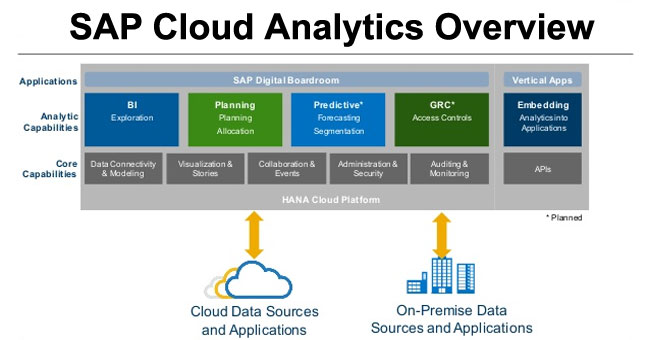
The SAC was natively built on the SAP Cloud Platform and this, in turn, was known formally as SHCP or SAP HANA cloud platform. SAC permits, business decision makers and data analysis to plan, visualize and predict from a single, secure, cloud-based environment. Integration can be achieved by users of SAP Analytics Cloud since all analytic functions and data sources are within a single product. The core functions here can be accessed from the very same UI that is architected for simple use by Business users.
The SAP Analytics Cloud has a diverse history in terms of its usage and names of science for used in projects in the past. Given below are a list of the most commonly used names for it by Enterprises:
- SAP Cloud for Analytics (C4A)
- Formerly known as Project Orca
- Formerly known as SAP BusinessObjects Cloud
- Evolution of SAP Cloud for Planning
- BI component, Replaces SAP Lumira Cloud
- SAP Cloud Analytics (because it just sounds better)
To sum up, the SAP Analytics Cloud includes 44 areas within the tool itself grc or governance, risk and compliance business intelligence and planning and predictive functionalities.
Concept and Benefits of SAP Analytics Cloud
The most vital benefits of the SAP Analytics Cloud is the use of all data sources, data connectors and data access of hybrid nature to business-critical data sources. This will include SAP analytics solutions, SAP Business Warehouse or BW, SAP S/4 HANA and even non-SAP applications. It can access both cloud and on-premise resources with either import or live data connections.
Authoring which is cloud-based lets users gain business insights directly from web browsers. This will eliminate the need to install extra software on the desktop and will give an instant access to fresh insights. In the end, the SAP Cloud Platform has high performance because of in-memory computing abilities and this is regardless of data volume size.
SAP Analytics Cloud can classify as a smart app as it contains intelligent actions functionalities and options all bundled together in a single product. For example, the smart Discovery feature instantly finds out main business drivers behind key performance indicators and gives valuable Insight. These are also known as smart transformations which are basically suggestions of an intuitive nature which happens during data preparation and automation or even repetitive workflows. There are also “smart groupings” which automatically does data segmentation based on parameters that are specified by the user which saves time greatly.
Conclusion
SAP has continuing innovation and detailed ideas which are built for the future enterprise it is difficult to predict where HR and IT are heading. For example, it will be hard to map the nature of innovations that will happen in just a few years from now since search innovations have always strived done variable change and according to the emerging market. But enterprises can rest assured knowing that integration with the Cloud is the way ahead for any SAP product.
Another key component to the situation is the human system interactions and the features that will catch everyone’s fancy in the future. This will also depend on the platforms that will be in Vogue and Systems on which it will be running on the devices such as mobiles tablets or something new entirely. It is best to have enterprise agility which will allow for the organization to adopt updates on a regular basis.
That’s all for this article. If you’ve any queries related to this article, feel free to mention it in the comments section. And if you are looking for more such engaging blogs, visit our website.
At ZaranTech, we offer a self-paced online training program on SAP SuccessFactors Employee Central conducted by some of the experienced and sought-after SMEs.


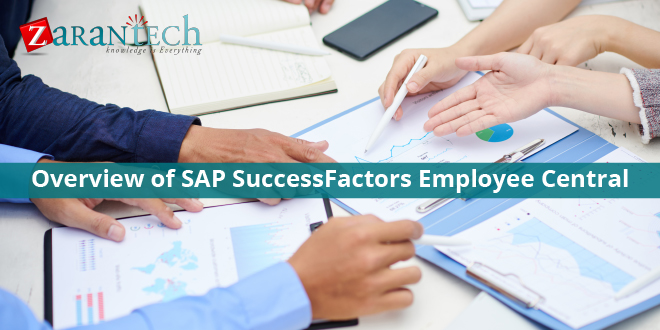


 99999999 (Toll Free)
99999999 (Toll Free)  +91 9999999
+91 9999999